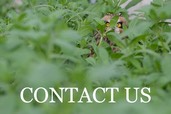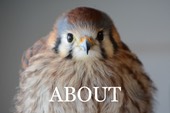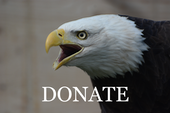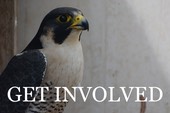Barn Owl Babies
By the time they are 5 or 6 days old, hatchling Barn Owls are able to eat food off of a plate. Their eyes are still closed, but their mouths open wide.


New Arrivals
These 6 babies arrived at the Tri-Cities Center from Ellensburg on Tuesday, with transportation help from Kittitas Audubon Society. Raptors start incubating their eggs as soon as they lay the first one which means the eggs hatch asynchronously. That explains why the owlets are different sizes. On Tuesday the two smallest babies needed their food cut into bite-sized pieces. By Saturday they were able to swallow a whole mouse.

The Art of Nature
On Friday the Education Team participated in spring break activities at The Hanford Reach Interpretive Center. We started with the release of a Red-tailed Hawk who had been injured a few miles from the interpretive center. The kids (and their parents) enjoyed seeing raptors up close, before getting a lesson on painting birds from local artist Gail Roadhouse.


Screech Release
On the way home, newly arrtived interns Jordan and Brittany released three Western Screech Owls at Two Rivers Park.


Record Setting Hawk
The week ended on a sad note with the admission of a large, female Red-tailed Hawk. Her injuries were at least a week old. She had a large, maggot-infested hole in her crop and a badly broken wing that could not be repaired. A blood sample revealed the highest lead level we have seen to date in a hawk: 280.7 micrograms/deciliter. Generally birds with this amount of lead are emaciated, anemic, paralyzed and unable to stand. Not this bird. She was slightly underweight, but still quite handy with her feet.
It is unclear how she was hurt, although her injuries were consistent with colliding with a barbed-wire fence. It is also impossible to know what she ate that was contaminated with lead. We will x-ray her body on Monday to see if there is still metal in her digestive tract. To make matters even worse, she had a large brood patch, indicating she was either incubating eggs or brooding chicks. Either way, she has been off the nest at least a week and they probably did not survive.

Thank You Toni
Special thanks to volunteer and photographer Toni Faust who had a busy week helping Blue Mountain Wildlife, including taking all the above photos, with the exception of the brood patch.







